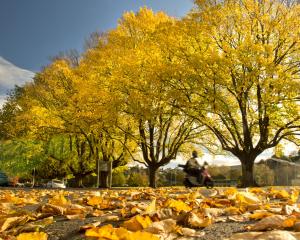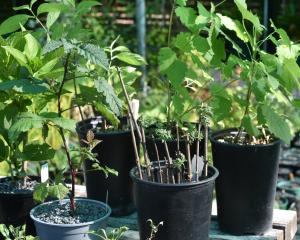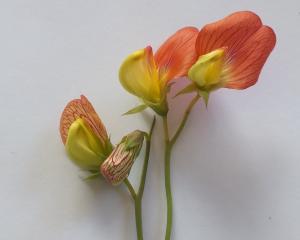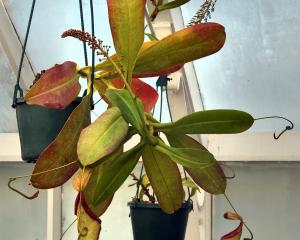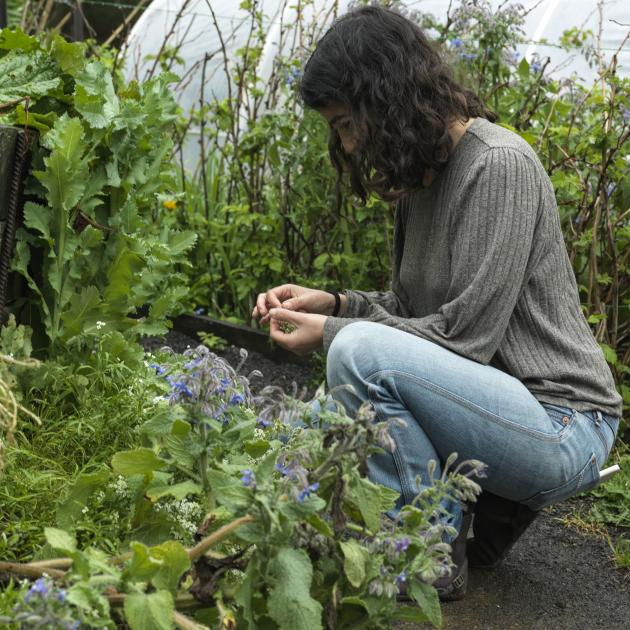
Saving seeds from the plants you grow is very satisfying. It gives you a deeper connection to your plants’ full life cycle. Plants from the Asteraceae, Brassicaceae and Amaranthaceae families are magnificent to look at when they go to seed.
Seeds from some plants such as tomato and squash can be saved very easily. When you save your own seeds, you complete your part of the ancient deal, the pact that gardeners throughout time have made with plants: I will grow you and help you multiply, and you will feed me.
There are many benefits to saving the seeds of your favourite vegetables. When done well, saving seeds can help you acclimatise your plants to better suit your particular growing conditions, which, in turn, will reward you with healthier plants and higher yields. You can also save the seeds of any surplus plants or plants you didn't get to harvest before they started bolting. Although you won’t be saving them to preserve the seed line, you can still grow them to eat, save a bit of money and enjoy the process.
Saving your own seeds well will help make sure the varieties you love will continue to be available, even if the place you bought the seeds from no longer stocks them. Many of today’s popular seed varieties are the work of home gardeners, who, for generations, have saved seeds of their favourite varieties. Every time you save your own seeds, you are effectively breeding your plants. There are a few things to consider when saving seeds with this goal in mind, as the seed lines need to stay pure and vigorous.
When you save seeds, you will usually harvest far more seeds than you can use. This is an excellent opportunity to share your seeds with others, and swap seeds with your neighbours and other gardeners in your community. You can collaborate with friends, with each of you saving seeds from different vegetables and sharing the seeds between you. Look out for local seed-swap groups and community seed banks, as these are great initiatives developed to assist and support gardeners to save and share seeds, and preserve treasured seed varieties that are not commercially viable. We love taking part in local swaps, as it is an excellent opportunity to connect with like-minded gardeners, share the seeds of our favourite varieties, and receive exciting seeds as well.
 Seed-saving basics
Seed-saving basics

Open pollinated and hybrid varieties
The best vegetable seed lines to save from your garden are open-pollinated varieties. This means that the parents of the plants you are saving seeds from are the same variety, and that their offspring are likely to have very similar properties to their parents.
Unlike genetically modified seeds, hybrid varieties are relatively harmless and are a result of crossing parents from two or more varieties. Although their direct offspring, referred to as F1, have specific desirable characteristics, their grandchildren's generations (F2) and beyond will most likely be very different and vary widely, and therefore won’t provide reliable results. There are good reasons to use hybrid seeds in the garden; often hybrid seed varieties will be more vigorous, disease-resistant and higher-yielding than open-pollinated varieties. Most of the worldwide multi-billion dollar commercial seed growing industry is focused on improving hybrid varieties, as these seeds can be sold for a higher price point, and will encourage customers to keep on coming back, instead of saving seeds from the plants. The disadvantage of growing hybrid seed varieties is that they are not always chosen or bred for the best flavour and that considerations like shelf life and uniformity take precedence.
Some hybrids are more simple crosses than others, with relatively small variations. If you are happy to experiment, you might find that you can easily save many hybrid lines, especially baby leafy greens, root vegetables and herbs, with good results. In the Cucurbitaceae and Solanaceae families, the crosses tend to produce wilder results, but they can also be successfully saved. Some hybrid varieties are seedless or infertile, but that is not the norm. Dehybridising hybrids is an exciting practice in which over several years of careful selection, you can breed the plant’s best properties into stable seed lines. To learn more, we highly recommend Carol Deppe’s excellent book, Breed Your Own Vegetable Varieties.
Growing considerations
Growing to preserve the seed variety
If you want to save seeds to preserve the seed line, there are a few more rules to follow, compared with saving the seeds for personal use.
Grow a minimum number of plants
To properly preserve a seed line, you will need to grow a minimum number of plants to maintain good genetic diversity within the seed line. This minimum number changes between different types and helps ensure that the plants stay vigorous. If you only save seeds from a small number of plants, it is likely your seed line will deteriorate over time. The minimum number of plants to save seed ranges from 12 to 200 depending on the vegetable.
Growing a larger number of plants than you need to ensure good plant vigour allows you to remove plants that show unwanted characteristics, in a process called roguing. When you save seeds, it is an opportunity to continuously select the best plants to breed from. Plants should be closely observed throughout the season, and plants with unwanted characteristics should be removed before they flower, so their genetics won’t be transferred. Plants that quickly bolt and go to seed are best not kept for seed. Saving seed from these plants will increase the tendency of the next generation to bolt.
By choosing the most vigorous, tastiest, healthiest plants, these characteristics will ensure your next generation of plants will be as good, if not better than the one before.
Avoid eating your best plants
Avoid eating your very best plants, as they are the best plants to save seeds from. With tomatoes and some other fruits, you can eat the fruit and save the seeds at the same time. With pumpkins, the seeds will continue to ripen for two to three months after harvest, so if the variety stores well and you have the patience, waiting will result in higher-quality seeds. Many other vegetables require you to let the plants grow past their edible stage in order to save their seeds.
You can harvest a few leaves without affecting the health of your plants, but it is best to leave the plants you are saving seeds from alone to let them grow strong in peace. Ideally, you should eat small- to medium-sized plants that have characteristics that you don’t like, and leave the bigger ones alone. It’s hard to do, but it will mean the next generation of seeds will come from the healthiest, strongest plants.
Avoid cross-pollination
Avoid cross-pollination between seed varieties of the same vegetable. If plants from different varieties of the same species are grown in proximity to each other, the pollen can cross, and hybrids will be created. Although all plant varieties can cross within their species, self-pollinated plants (also referred to as inbreeding plants) tend to cross less, as pollination generally occurs before the flowers open. You can save seeds from self-pollinating varieties grown next to each other, such as tomatoes, beans, peas and lettuce. If possible, it is safer to have a 6m (20 feet) distance between varieties, as some pollination can still occur, such as when bees eat or tear open a flower’s petals and deposit pollen from another plant.
Plants that are pollinated by wind (such as beets, corn and spinach) and insects (most vegetables), especially by bees, need to have another plant’s pollen to develop seeds and are referred to as outbreeding plants. To save seeds from outbreeding varieties, you will benefit from at least a 1.6km (1 mile) distance between varieties, which can be decreased if the landscape and vegetation make it harder for insects and wind to travel.
There are methods you can use to grow more than one variety and save the seeds from both. Hand pollination is possible for Cucurbits, especially large, flowering species such as pumpkins or courgettes, but it’s not a common practice in the home garden. An easier way to save seeds from plants that can cross is to use time to your advantage, and sow them six to eight weeks apart, so their flowering seasons won’t overlap. In this situation, you would be safe to save the seeds from the first fruits of the first variety, and the late fruits of the second variety.
Be aware that some vegetables look different and have different names, but are actually the same species, and will still cross. For example, broccoli, cabbage and cauliflower will cross with one another, and chard and beets will cross with each other too. The opposite can also be true, and vegetables that look similar or have a similar name are actually different species and will not cross. These include the three types of squash (pepo, maxima and moschata); you can grow one of each variety without the risk of cross-pollination.
Lastly, some vegetables are close enough to their wild ancestors from which they were cultivated that they would likely cross with each other. The most relevant example is the wild carrot, which will readily cross with the domestic carrot if it is close by.
 THE BOOK
THE BOOK

The Abundant Garden, by Niva and Yotam Kay, published by Allen & Unwin, RRP $45
THE AUTHORS
Niva and Yotam Kay run the Pakaraka Permaculture Market Garden on the Coromandel Peninsula where they live with their two daughters and dog. They met in 2006 while studying interdisciplinary environmental studies and continued into permaculture design and education training.
Together they have taught permaculture and regenerative gardening around the globe and now run courses from the Pakaraka Permaculture Education Centre.







